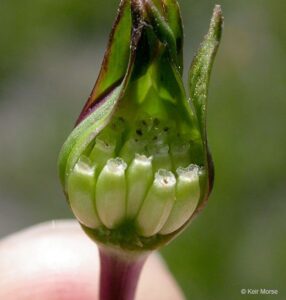How to Propagate Phalacroseris bolanderi

Unlocking the Secrets of the Bolander’s Sunflower: A Propagation Primer
The Bolander’s Sunflower (Phalacroseris bolanderi) isn’t your typical sunny garden giant. This unassuming member of the Aster family, with its low rosette of leaves and subtle yellow blooms, is a treasure found in the rocky, high-elevation landscapes of California and Oregon. If you’re lucky enough to live in its habitat or are looking for a unique botanical challenge, learning to propagate this intriguing wildflower can be a rewarding endeavor.
Seeds of Success: Embracing the Unconventional
While some might be tempted to divide established plants, Bolander’s Sunflower propagation through seeds reigns supreme. This isn’t just for purists; it’s a matter of practicality. These tenacious plants often dislike being disturbed, making seed propagation the more reliable approach.
Timing is Everything: Sowing the Future
-
Fall Sowing (Mimicking Nature’s Rhythm): Mother Nature knows best! In their natural habitat, Bolander’s Sunflower seeds enjoy a period of cold stratification, which mimics the chill of winter. To replicate this, sow your seeds in late fall directly into prepared outdoor beds or containers. Gently press them into the soil surface, but avoid burying them deeply, as light aids germination.
- Spring Sowing (A Head Start): If fall sowing isn’t feasible, you can still give your seeds a fighting chance. Mimic winter indoors by placing moistened seeds in a sealed bag with a bit of vermiculite in your refrigerator for 4-6 weeks. After this chilly “vacation,” sow them in a seed-starting mix indoors under grow lights and transplant outdoors after the last frost.
A Home Away from Home: Creating the Ideal Nursery
Whether sowing indoors or out, Bolander’s Sunflower seeds appreciate well-drained soil. Incorporating sand or perlite into your chosen medium can help mimic their natural rocky environment.
Patience, Young Padawan: Nurturing Growth
Germination can be a slow and steady process, often taking several weeks to months depending on conditions. Don’t despair if you don’t see sprouts immediately. Maintain consistent moisture, ensuring the soil never completely dries out but also avoiding waterlogging, which can lead to rot.
Once seedlings emerge, provide bright, indirect light if growing indoors. Thin out weaker seedlings, giving the stronger ones room to thrive.
From Seedling to Stardom: Transplanting and Beyond
Once your Bolander’s Sunflowers have developed a robust root system and outdoor temperatures have warmed up, it’s time for them to graduate to their permanent homes.
Choose a location with excellent drainage and plenty of sunlight. Remember, these resilient plants are used to harsh conditions, so don’t be afraid to give them a gritty, well-drained spot that mimics their natural habitat.
The Rewards of Patience: Witnessing Beauty Unfold
Propagating Bolander’s Sunflowers might require patience and a touch of green-thumbed determination, but the rewards are well worth it. Witnessing these unique beauties establish themselves and eventually bloom, bringing a touch of the wild into your garden, is a uniquely fulfilling experience. Remember, every successfully propagated plant is a testament to your dedication and a vital step towards appreciating and preserving the diversity of our natural world.